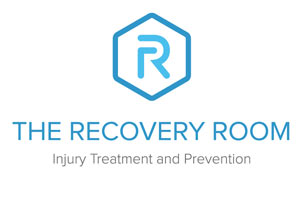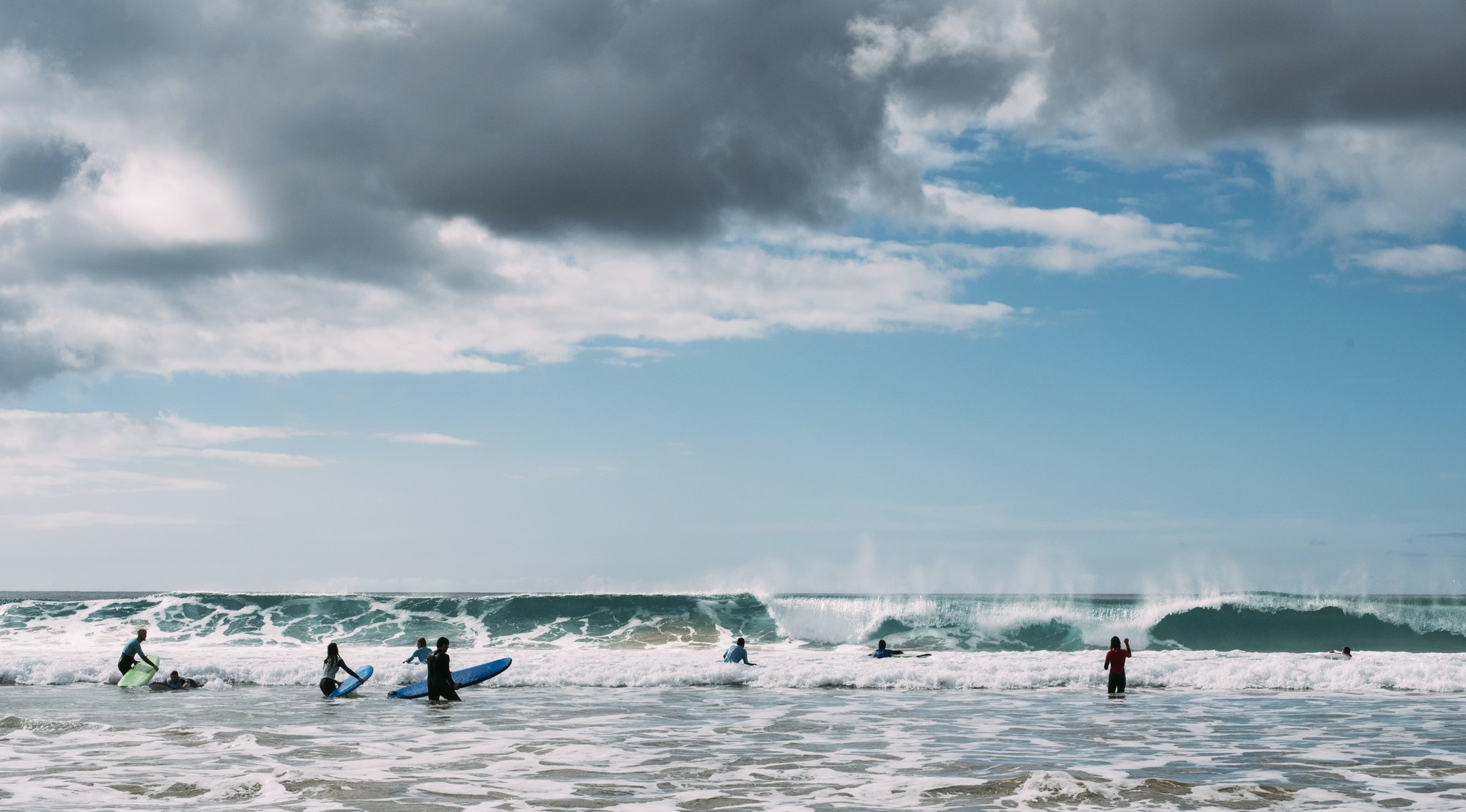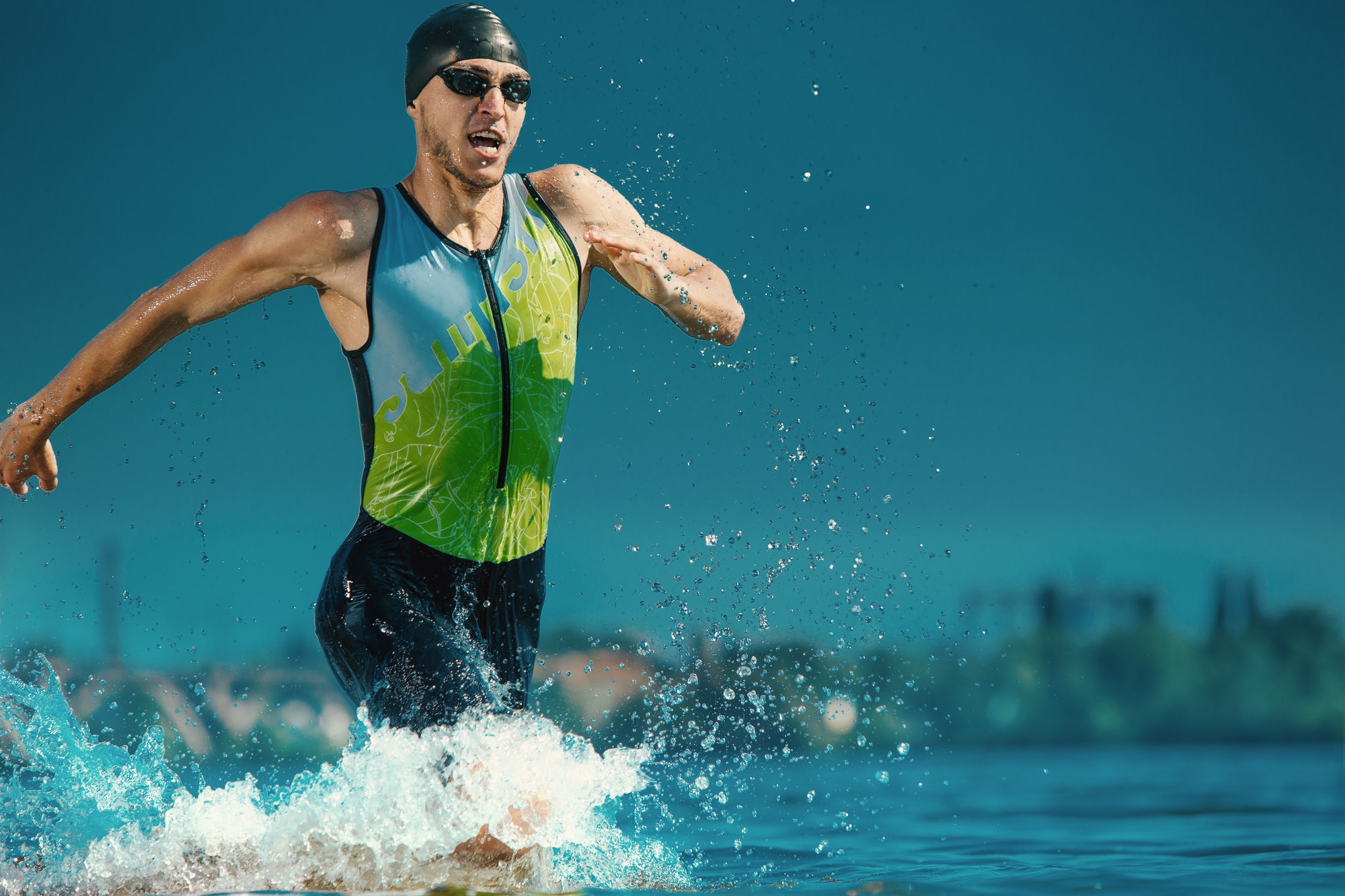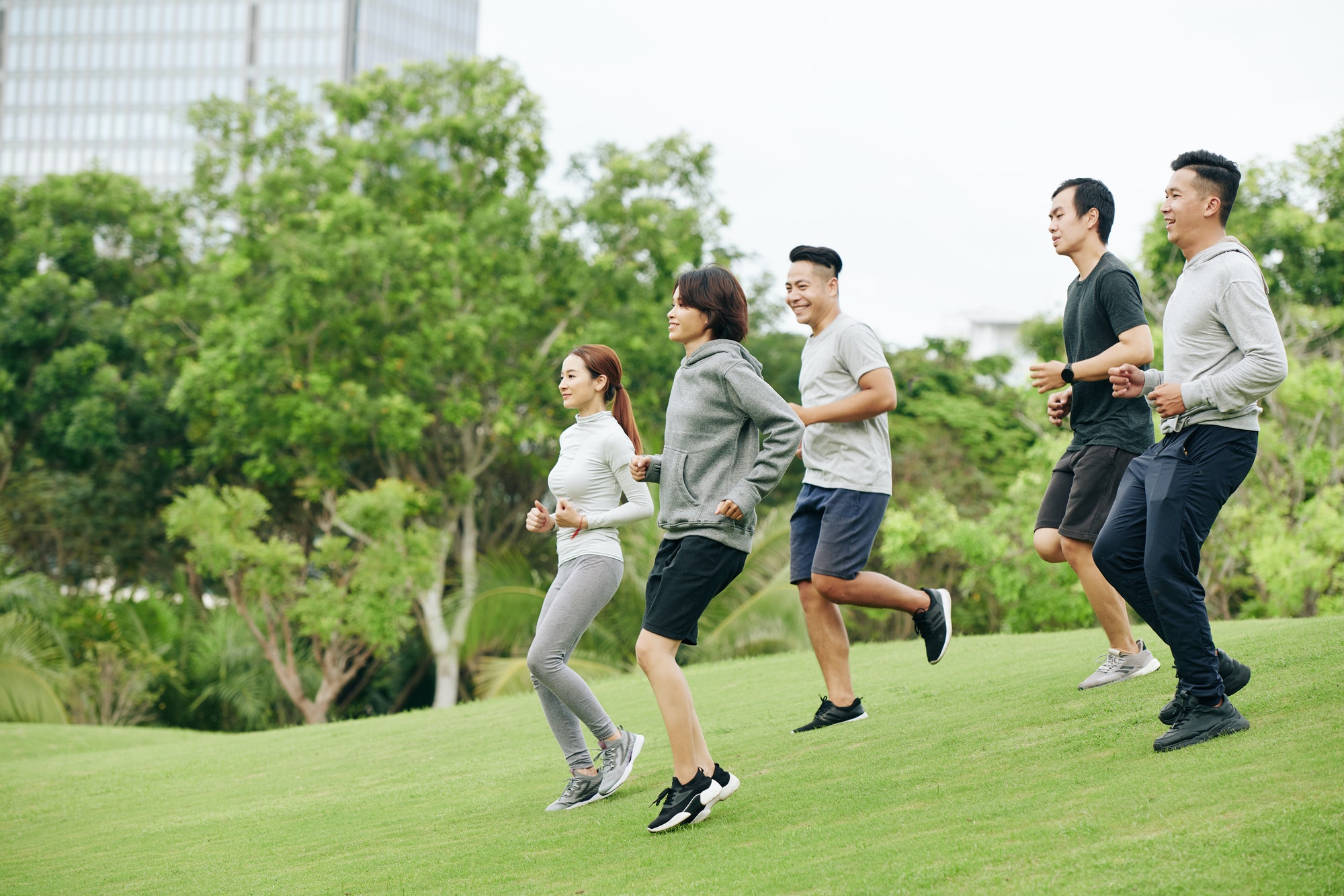The popularity of surfing has a wide range of estimates ranging between 5 and 28 million surfer’s worldwide (surfline). Due to its recreational nature defining a surfer is difficult causing a wider range of figures. It is estimated that there are 600,000 surfers in the United Kingdom, 40% of which are female and 60% male (SAS, 2007).
Surfing is a multi-component sport that requires muscular endurance with bursts of intense anaerobic activity, often in unpredictable and turbulent conditions. Rapid powerful movements from the shoulder and arms create forward propulsion of the surfboard through the water for catching and paddling through waves.
Thus, injuries to the upper extremity, especially the shoulder are common due to the paddling stroke and chronic conditions will frequently go untreated at the point of onset. If a segment of the kinetic chain has less than optimal function, surrounding structures including the rotator cuff muscles will compensate but are exposed to mechanical overload and injury through chronic overuse (Prentice, 2011).
The shoulder is the most mobile joint in the body, stabilised statically by ligaments and dynamically by rotator cuff muscles (Nordin and Frankel, 2001). Shoulder impingement (SI) is an umbrella term as different mechanisms cause symptoms to present as pain on humeral elevation, rotation and mechanical irritation.
Contact of the undersurface of the supraspinatus or infraspinatus with the posterior glenoid labrum or acromium process when the arm is abducted 90 degrees and laterally rotated (Magee, 2008) can cause SI (Figure 1). Surfers between 15-35 years could suffer secondary impingement due to muscle imbalance and abnormal movement patterns through poor scapular stabilisation (Bruckner and Khan, 2009). Athletes aged 40years or above are particularly subject to degenerative changes to the rotator cuff, coracoid process and corocoacromial ligament. In overhead sports like surfing, high load and volume of overhead activity could predispose to SI.
There is a lack of detailed investigations of the occurrence of shoulder impingement in surfing. Nathanson et al. (2002) found chronic overuse shoulder injury as the most prevalent overuse condition in surfing, however specific types of shoulder injury were not identified.
Inclusion of literature from other overhead activity sports such as swimming can be justified based on the similarity of paddling stroke and mechanism of injury (Nathanson et al., 2007).
Weldon and Richardson (2001), in a review article, found that shoulder pain in swimming represented 90% of reported complaints. As mentioned earlier, SI could result through poor scapular stabilisation and misalignment on overhead activity.
Therapy exercises have been shown to improve shoulder function and reduce pain in patients with SI (Bang and Deyle, 2000).
Exercises for shoulder impingement, scapular stabilisation and strengthening the rotator cuff, as well as, addressing areas of flexibility and/or strength imbalances will improve the overall effectiveness of treatment (Ledewig and Braman, 2011).
For the selection of the exercises it is important to consider the sport specific demands imposed on the athlete to prepare for their return to sport. Surfing requires mostly muscular endurance, balance, core stability, flexibility and cardiovascular (CV) fitness.
Closed kinetic chain exercises, such as press-ups, are useful to improve scapular stability for SI as well as having a global effect on the postural and mechanical stability.
Eccentric, concentric and isometric contractions occur in different muscles through the kinetic chain and therefore improve sport specific movement (Prentice, 2011).
Prentice (2011) recommends open kinetic chain exercises to improve peak force and endurance through a single joint. These were more focused to the musculature surrounding the shoulder girdle due to injury and fitness requirements for the paddling stroke.
Shoulder Stability- Scapular Stabilisation
It has been proposed that scapulothoracic weakness could predispose to SI (Kamkar et al.,1993). The serratus anterior (SA) has an important role in dynamic stability, if it is weak it can cause posterior tilting of the scapular. Deiderichsena et al. (2009) found that patients with unilateral SI have a lower activation of the SA on abduction, compared with the nonsymptomatic side, or a healthy control group. Increased activation of the upper trapezius has been a common finding, compensating for the underactive SA.
Others have found an increased strength in both upper and lower trapezius on abduction (Ludewig and Cook, 2000). Despite the differences, the SA appears to be commonly under-active in SI sufferers.
Thus, strengthening and reactivation of the SA is vital to dynamic shoulder stability and re-injury prevention (Ellenbecker et al. 2010). Cools et al. (2007) found that activation of trapezius and SA was the most effective side-lying. However, for late rehabilitation,sport-specific movements are more appropriate. Maenhout et al. (2010) found increased SA activity when the ipsilateral leg was extended, and increased lower trapezius activity on the extension of the contralateral leg in the press up position.
This activity was included in the leaflet as it will treat a possible mechanism of injury through poor scapular stabilisation. Moreover, it is sport specific as kicking is used at the last moment for shortboard riders to catch the wave.
Strength and Musculature Endurance
In the late stage of rehabilitation, both concentric and eccentric isotonic strengthening exercises are encouraged to stress the remodelled tissue through a full range of motion (Prentice, 2011). Increasing the resistance will increase the number of myosin and actin cross-bridges required for a muscle contraction, resulting in muscle hypertrophy as the body adapts to imposed demands.
Eccentric exercises are better at building strength than concentric but are highly stressful and caution should be taken to avoid damaging weaker collagen (Peterson and Renstrom, 2002).
In reality, isolation of concentric and eccentric exercises in functional movements are impossible.
Agonist/ antagonist pairs have to be contracting in opposite ways to control limb movement, thus both types of contraction happen simultaneously. Controlling movements and progressing weights slowly to include, multiplanar and rotational movements are key to physiological adaptations through increased stresses and demands.
Nuber et al. (1986) found that 11 swimmers with unilateral impingement had no differences in bilateral strength, but the symptomatic shoulder muscles fatigued much quicker in external rotation.
Surfing requires long periods, and frequent bouts of high intensity of shoulder activity and external rotation could be a predisposing factor for SI. Fatigue of muscles through external rotation reduces the ability to depress the humeral head, leading to decreased sub acromium space.
Strengthening the rotator cuff and improving scapular stability should alleviate SI in swimmers (Nuber et al. 1886) although small sample size was used in this study.
Muscle endurance is improved through the use of low weights and high repetitions and 3 sets of 15-20 repetitions are required to create a fatigue response to develop local muscular endurance and included in the leaflet (Peterson and Renstrom 2001).
Core stability
In surfing, as well as all sports, limb control and function depend on core strength as distal movers cannot function efficiently to deliver optimal strength and power without this core.
Kibler and Sciascia (2008) highlight the importance of the kinetic chain activity and suggest that core stabilisation should start as early as possible and is key to every part of the rehabilitation process (Prentice, 2011).
With the shoulder joints inherent instability and the loss of function of the dynamic stability following injury, late stage core work must seek to improve on the musculature activity pattern (Loderman, 2010).
Most of the literature surrounding core stability relates to lower back pain (Lederman, 2010) thus rendering clinical application anecdotal for shoulder pathology. Although relating the kinetic chain and shoulder dysfunction, stability of the core could only improve the movement balances of the distal segments (Kibler and Sciascia, 2008).
Areas for further research should look at the firing patterns and injury rate of the core muscles, although it will be very difficult to determine if the pathology caused the inhibited firing pattern, or the delayed activation caused the injury especially, in distal segments.
Stretching
Static stretching is a widely used and relatively safe method to increase the ROM of a joint (Peterson and Renstrom, 2002). Literature defining the duration for an optimal stretch is varied, ranging from 3- 60 seconds.
Bandy et al. (1997) found that 30 seconds was optimal stretch time to improve flexibility in hamstring muscles, increasing the hold up to 60 seconds had no further benefit. Static stretching at the end of the range will cause plastic deformation of collagen and elastin, providing a longer resting length due to realigning the collagen fibres, giving a longer resting length (Prentice, 2011).
Blanch (2004) highlight that posterior tightness of the gleno humeral joint capsule can lead to overhead problems in swimmers through anterior migration of the humeral head.
The tightness of the pectorals major will exacerbate the problem through the further anterior translation of the humerus. Ludewig and Braman (2011), highlighted that stretching the posterior capsule and pectoralis major improves symptoms in SI sufferers if these structures are tight. Thus, static stretching of these muscles was included in the programme to directly influence the possible mechanism of injury.
Overall, the design of the rehabilitation programme needs to consider the diagnosis and causes of impingement. Unless these areas are addressed the athlete could develop long term pathological shoulder problems, namely rotator cuff disease and full thickness tears. Scapular control and stabilisation is key to the functional movement around the shoulder girdle.
Core stability and other sport-specific demand should be trained to a level exceeding that of the surfer’s requirement for the sport. Adherence to this programme should ensure that the healing process continues and the structures can withstand future repetitive stresses, which is vitally important in an unpredictable sport such as surfing.




